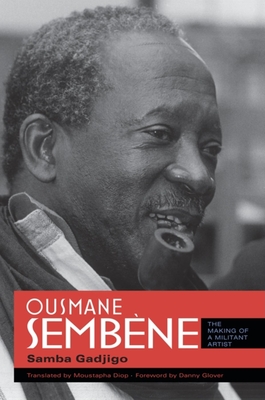 Identity Economics suggests that people’s identity--who they choose to be and who they’re perceived to be--is the most important factor affecting their economic lives. This book is co-authored by George A. Akerlof, economics professor at Berkeley and 2001 Nobel Laureate in Economics, and Rachel E. Kranton, economics professor at Duke.
Identity Economics suggests that people’s identity--who they choose to be and who they’re perceived to be--is the most important factor affecting their economic lives. This book is co-authored by George A. Akerlof, economics professor at Berkeley and 2001 Nobel Laureate in Economics, and Rachel E. Kranton, economics professor at Duke.Choice review:
The evolution of economics as a science has taken many paths. The more traditional approach is to assume that when individual optimizing behavior is incompatible with the common good, it is because the assumptions of the perfectly competitive model are violated. Imperfect information, uncertainty, externalities, and collusion lead to market failure. Much less attention has been given to how social factors (the common good) motivate individual economic behavior. Akerlof (Univ. of California, Berkeley; Nobel laureate, economics) and Kranton (Duke Univ.) are eminently qualified to take this approach, given their many scholarly publications. They present this material in a very readable and entertaining way. Their findings are that economic behavior is governed by one's social category, by the norms of that social assignment, and by how one views one's identity in that social context. What might appear as irrational may be quite reasonable, given one's perception of where one is in a group. The authors are not advocating that the traditional economic approach be jettisoned but rather expanded to allow for self-identity. The fruitfulness of this is seen in real-world examples in organizational behavior, educational attainment, gender and work, discrimination, and poverty. Summing Up: Highly recommended. General readers, upper-division and graduate students, researchers, professionals. -- J. F. O'Connell, emeritus, College of Holy Cross
Ousmane Sembène: The Making of a Militant Artist by Samba Gadjigo (2010).
 This book looks closely at the life, personality, and beliefs of Africa’s controversial “father of cinema” in the context of colonial and post-colonial African culture. The author is a french professor at Mount Holyoke College who specializes in French-speaking Africa and African cinema.
This book looks closely at the life, personality, and beliefs of Africa’s controversial “father of cinema” in the context of colonial and post-colonial African culture. The author is a french professor at Mount Holyoke College who specializes in French-speaking Africa and African cinema.Choice review:
This is the first biography of one of the most important African writers and filmmakers, a man who remains, as Gadjigo (Mount Holyoke College) puts it, "an unknown celebrity." The author intends to rectify this situation by retracing Sembène's trajectory from 1923 to 1956, the formative years in which Sembène (1923-2007) became a militant artist. By Gadjigo's own account, this is a careful "reconstruction" of the artist's life: because of the scarcity of written information about Sembène, the author has relied on first-hand oral testimonies. He provides numerous insights into Sembène's personal development by recalling little-known episodes of his life--episodes that reveal Sembene's major concerns as he expressed them in his work. In placing Sembène's experiences in their larger context, Gadjigo also re-creates a time period: for example, the reader gets a glimpse of what life was like for African dockworkers in post-WW II Marseille. This book is lively and the many quotes and personal testimonies make for an enjoyable read. Summing Up: Recommended. Upper-division undergraduates through faculty. -- S. Vanbaelen, Butler University
Women in Weimar Fashion: Discourses and Displays in German Culture, 1918-1933 by Mila Ganeva (2008).
 Ganeva looks at how shifting fashion trends during the Weimar Republic allowed women to transform from objects of the male gaze to agents of self-expression. Ganeva is a German professor at Miami University, Oxford.
Ganeva looks at how shifting fashion trends during the Weimar Republic allowed women to transform from objects of the male gaze to agents of self-expression. Ganeva is a German professor at Miami University, Oxford.Choice review:
Informed by current research (in primary and secondary literature in numerous disciplines) and theoretical models, this study adds nuance to current understanding of German modernity. Arguing that fashion was an important area for women's self-expression in Weimar Germany, Ganeva (Miami Univ., Ohio) explores writings of female fashion journalists; a forgotten subgenre of Weimar film, the fashion farce (Konfektionskomödie); and the portrayal of the world of fashion in fiction. She shows that journalists combined the external attributes of the dandy with the critical eye of the flaneur to establish a unique voice of agency within German modernity. Aware that the autonomy established in the sphere of fashion in this period was a highly circumscribed one fraught with ambivalence, Ganeva also reveals the divergence between the generally glamorous representations and the lived reality by reconstructing the lives of models in Berlin. She concludes with an analysis of Irmgard Keun's novel Gilgi (Berlin: 1931), in which the protagonist turns to fashion as a sphere for creative independence. Ganeva's achievement lies in showing that these modern women saw themselves as active agents creating their own identify rather than as women subscribing to an objectifying male gaze. Summing Up: Recommended. Lower-division undergraduates through faculty; general readers. -- R. Bledsoe, Augusta State University
--Hannah Jarrett '12

![Lafayette letter to Francis Huger [recto]](http://farm7.static.flickr.com/6121/5964736558_d2be79fb0a.jpg)
![Lafayette letter to Francis Huger [verso]](http://farm7.static.flickr.com/6125/5964178989_11887075d5.jpg)









